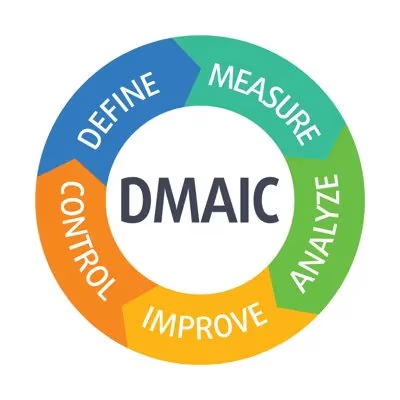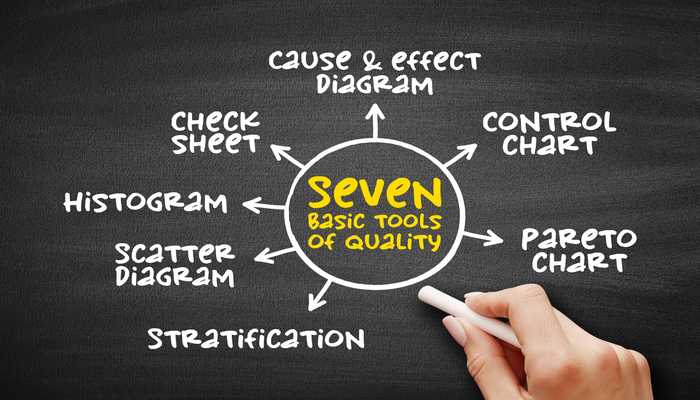Summary: Achieving ‘First Time Right’ (FTR) is critical in project management, as it emphasizes accuracy from the outset to reduce defects and enhance efficiency. As a key component of total quality management (TQM), FTR ensures that each stage, from planning to execution, is completed without errors. This approach not only cuts costs associated with rework and operational inefficiencies but also boosts customer satisfaction by delivering high-quality results.
What is First Time Right?
First Time Right (FTR) is a project management principle focused on performing tasks or procedures correctly on the first attempt. By preventing defects and errors, FTR reduces rework and quality issues, ultimately leading to increased customer satisfaction and higher operational efficiency.
Importance of FTR
FTR plays a pivotal role in manufacturing excellence, as it saves time and resources by ensuring tasks are done correctly from the start. This leads to higher quality output, improved customer loyalty, and reduced operational costs. Organizations can optimize their processes by striving for FTR, minimizing errors and inefficiencies.
The Metrics of First Time Right
FTR’s effectiveness can be measured using specific metrics while implementing strategies that directly impact FTR.
1. Integrating Jidoka Principles
By incorporating Jidoka principles, production can be halted automatically when abnormalities occur, ensuring defects are avoided. This method guarantees quality control at every stage and helps reduce errors in the process.
2. Continuous Improvement and Agile Methodologies
Continuous improvement practices combined with agile methodologies allow teams to make quick adjustments and improvements, ensuring tasks are completed accurately from the beginning. This adaptability fosters consistency and helps achieve the desired outcomes.
3. Establishing KPIs
Organizations should set up clear Key Performance Indicators (KPIs) to measure FTR performance. Tracking these metrics offers insights into areas needing improvement and supports efforts to reduce rework, improving overall efficiency.
FTR Score
The FTR score measures the percentage of defect-free products or services produced without the need for rework. A high FTR score is indicative of a company’s operational excellence and is essential for maintaining a competitive edge.
Defects per Million Opportunities (DPMO)
DPMO is a common metric used to calculate the frequency of defects in a production process. By reducing DPMO, organizations can pinpoint areas for improvement, further enhancing their FTR performance.
How can i ensure consistent quality in my operations?
Streamline your workflows with our advanced EQMS to ensure consistent quality from the start
Strategies for Achieving First Time Right
Implementing FTR requires a structured approach. The following strategies can help companies improve their FTR score:
1. Root Cause Analysis
Identifying and addressing the root causes of defects is crucial for improving FTR. This involves analyzing the production process, gathering data, and conducting thorough investigations to eliminate factors contributing to errors.
2. Quality Management Systems
Robust quality management systems are essential for achieving FTR. By implementing clear operating procedures, visual instructions, and comprehensive training, organizations can ensure that tasks are performed correctly from the outset.
3. DMAIC Methodology
Utilizing the DMAIC (Define, Measure, Analyze, Improve, Control) framework from Six Sigma, organizations can measure current performance, identify improvement areas, and control processes to sustain improvements. This structured approach is instrumental in maintaining a high FTR score.

4. Work Instructions
Providing clear, detailed work instructions ensures consistency and reduces the risk of errors. Using digital tools like connected worker technologies enhances instruction accuracy and execution on the shop floor.
5. Empowering Frontline Workers
Empowering employees through training, accountability, and the right tools helps them execute tasks correctly the first time. By promoting ownership, frontline workers can contribute to improving the organization’s FTR score.
Benefits of First Time Right
Achieving FTR brings numerous advantages to organizations:
1. Reduced Rework and Defects
Completing tasks accurately from the start eliminates the need for rework, reducing waste and lowering costs. This efficiency leads to increased productivity and faster project completion.
2. Improved Efficiency and Productivity
FTR minimizes interruptions caused by defects and errors, streamlining processes and boosting productivity. This allows organizations to meet deadlines and maintain consistent output quality.
3. Higher Customer Satisfaction
When products or services are delivered without defects, customer trust grows, leading to increased satisfaction and loyalty. A reputation for delivering high-quality output strengthens customer relationships and drives business success.
Overcoming Challenges in FTR
While FTR brings significant benefits, organizations often face challenges in its implementation:
1. Human Error
Despite clear instructions and training, human error can still occur. To mitigate this, organizations must continuously improve processes, employ error-proofing techniques, and implement strong checks and balances.
2. Operational Inefficiencies
Bottlenecks, inefficiencies, and lack of standardization can disrupt FTR efforts. Identifying and addressing these issues ensures smoother workflows and reduces the risk of errors.
3. Outdated Procedures
As technologies and practices evolve, outdated procedures can hinder FTR. Regularly reviewing and updating work instructions ensures alignment with current industry standards and helps maintain quality.
Conclusion
Achieving First Time Right (FTR) is essential for organizations aiming for operational excellence. By implementing robust quality management systems, fostering a culture of accountability, and utilizing data-driven methodologies like DMAIC, organizations can improve their FTR score. Overcoming challenges such as human error and inefficiencies is key to sustaining improvements. Ultimately, FTR not only reduces rework and operational costs but also enhances customer satisfaction and strengthens competitive positioning in the market.
FAQ First Time Right (FTR)
How is the FTR score calculated?
The FTR score measures the percentage of products or services completed correctly without defects or rework. It gives organizations a valuable KPI to assess their operational excellence and efficiency.
What are the benefits of achieving First Time Right?
Achieving First Time Right has several benefits, including reducing rework and defects, enhancing efficiency and productivity, and increasing customer satisfaction. It leads to cost savings, improved quality, and a more streamlined production process, ensuring quality in manufacturing from the outset
What challenges can hinder the attainment of FTR?
Some challenges that can hinder the attainment of FTR include human error, operational inefficiencies, and outdated procedures. You can address these challenges by continuously improving processes, implementing error-proofing techniques, and regularly reviewing and updating work instructions.
How can organizations improve their FTR score?
Organizations can improve their FTR score by identifying the root causes of defects, implementing quality management systems, utilizing the DMAIC methodology, providing clear work instructions, and empowering frontline workers. Continuous improvement and focusing on operational excellence are key to enhancing the FTR score.
Why is First Time Right important in the manufacturing industry?
In manufacturing, errors can lead to costly delays, wasted materials, and compromised product quality. Adopting a “First Time Right” approach minimizes these risks, leading to smoother project execution, lower costs, and higher customer satisfaction. It’s an essential strategy for maintaining competitive advantage and ensuring product reliability.
What are the potential risks of not achieving FTR in a project?
The potential risks include increased project costs, delayed timelines, reduced product quality, customer dissatisfaction, and a loss of competitive advantage in the market.
What role does employee training play in achieving FTR?
Employee training is essential for FTR as it ensures that staff are well-versed in quality standards, operational procedures, and the specific skills required to perform tasks correctly the first time.
What metrics can be used to track the success of FTR initiatives?
Metrics include FTR score, defect rates, rework costs, customer satisfaction, project completion time, and the percentage of tasks completed without errors or delays.
Image: Adobe Stock – Copyright: © Minh Do – stock.adobe.com
Image: Adobe Stock – Copyright: © CHOI – stock.adobe.com





